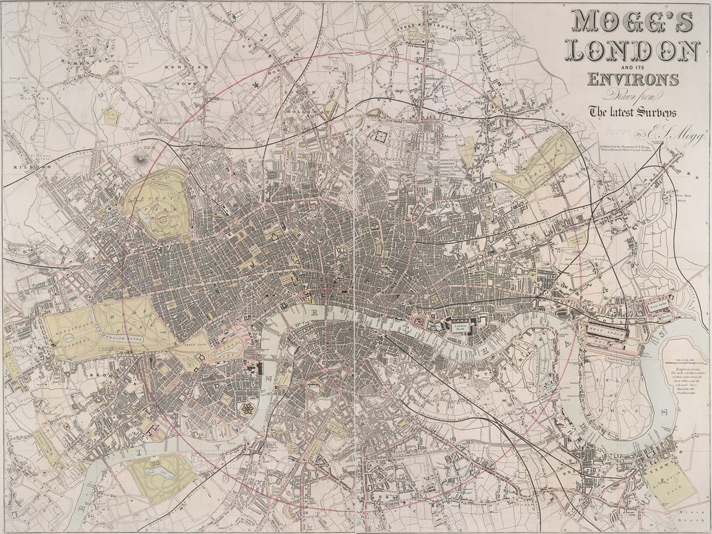This snippet is the second paragraph in the opening pages of Bleak House. It's actually worth including the first paragraph here for you, because it's also great:
London. Michaelmas term lately over, and the Lord Chancellor sitting in Lincoln's Inn Hall. Implacable November weather. As much mud in the streets as if the waters had but newly retired from the face of the earth, and it would not be wonderful to meet a Megalosaurus, forty feet long or so, waddling like an elephantine lizard up Holborn Hill. Smoke lowering down from chimney-pots, making a soft black drizzle, with flakes of soot in it as big as full-grown snowflakes—gone into mourning, one might imagine, for the death of the sun. Dogs, undistinguishable in mire. Horses, scarcely better; splashed to their very blinkers. Foot passengers, jostling one another's umbrellas in a general infection of ill temper, and losing their foot-hold at street-corners, where tens of thousands of other foot passengers have been slipping and sliding since the day broke (if this day ever broke), adding new deposits to the crust upon crust of mud, sticking at those points tenaciously to the pavement, and accumulating at compound interest.
So you can see that the first paragraph of the novel describes London in winter, primarily in terms of mud, but also smoke, soot, dogs, horses, and angry pedestrians.
The second paragraph, our snippet, focuses on fog.
Dickens follows the fog across all points of the compass: from up the river in the west to down the river in the east, and from the Essex marshes in the north to the Kentish heights in the south, and then into the ships and boats moored in Greenwich, nearer to the city center.
If you're not familiar with London, here's a map from the period—but note that Dickens' description extends beyond the boundaries of this map:


